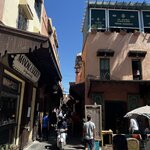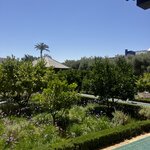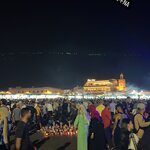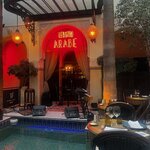Highlights
- Visit the Hassan II Mosque and the world's tallest minaret in Casablanca
- Wander the quiet, blue-washed streets of Chefchaouen
- Discover souks, tanneries, and artisan workshops in medieval Fes
- Listen to traditional Berber music beside a desert campfire
- Visit the busiest square in Africa, Jemee el-Fna, in Marrakesh
Brief Itinerary
| Day | Highlights | Overnight |
|---|---|---|
| Day 1 | Arrive in Casablanca, Transfer to Rabat | Rabat |
| Day 2 | Transfer to Chefchaouen, Explore the The Blue City | Chefchaouen |
| Day 3 | Transfer to Fes via Volubilis & Meknes | Fes |
| Day 4 | Explore the Medieval Medina of Fes | Fes |
| Day 5 | Drive to Erfoud, Sunset Camel Ride | Merzouga |
| Day 6 | Erg Shibi & Dades Valley, Drive to Ouarzazate | Ouarzazate |
| Day 7 | Aït Benhaddou, Drive to Marrakesh | Marrakesh |
| Day 8 | Explore Marrakech, Depart |
Detailed Itinerary
Day 1: Arrive in Casablanca, Transfer to Rabat
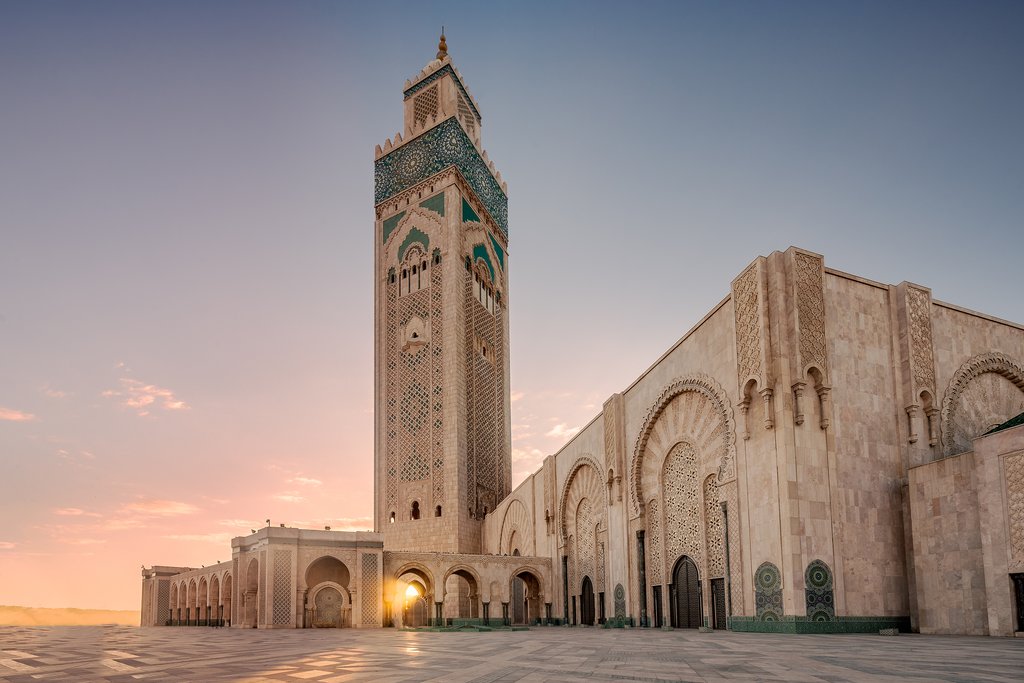
Casablanca is the modern commercial capital of Morocco. Unlike the imperial cities of Fes and Marrakesh, a single morning may actually be all you need to tour the city's highlights here before venturing farther afield.
If you only visit one place in Casablanca, Hassan II Mosque is recommended, which is located in a picturesque spot on the sea. Inaugurated in 1993—its 656-foot (200-meter) minaret is the tallest structure in Morocco—and the tallest minaret in the world. It's estimated that the courtyard can hold 80,000 worshipers with room for another 25,000 inside. While the exterior and surrounding area are impressive, the lavish interior is designed using wood, marble, carved stone, and gilded ceilings. This Mosque is also one of the few in Morocco that's open to non-Muslim visitors. The one-hour guided tours run in the mornings between 9 am and 2 pm and also include a tour of the Hammam in the basement.
A few other sights worth exploring include:
- The Hobous: Casablanca's "New Medina" was built in the 1930s by the French. Here, you'll be immersed in Art Deco architecture as you find a market filled with crafts, olives, vegetables, and spices.
- Boulevard de la Corniche: Take a stroll along this Beach Promenade area, often referred to as Morocco's "Miami."
- Rick's Café: Visit this eatery and follow in the footsteps of Ingrid Bergman and Humphrey Bogart as Rick's Café recreates Bogie's famous café in the legendary film. You can sip a cocktail while Sam plays it again!
In the afternoon, you'll venture north to the imperial city and the present-day capital of Rabat, a bustling metropolis with a rich history and notable tourist destinations. Explore the medieval fortification of the Chellah Necropolis in the heart of Rabat and wander past the Roman and Islamic ruins. You'll also step back in time to Rabat's original city center and enter through the grand door of the Kasbah des Oudaias. While this is mostly a residential area today, you can quietly wander along the peaceful white and blue-washed streets.
From here, visit the 20th-century Andalusian Gardens and enjoy the serene space away from the crowds. You'll also be able to discover the Hassan Tower, a minaret of the incomplete mosque and Mausoleum of Mohammed V. This project was abandoned in the 12th century, and all that remains today are 200 columns and the red sandstone tower, which stands at 145 feet (44 meters).
Driving time: 2 hours (including the drive from the airport)
Driving distance: 74 miles (119 km)
Day 2: Transfer to Chefchaouen, Explore the The Blue City

In the morning, you'll depart for the Rif Mountains and Chefchaouen. Enjoy the scenic drive to Chefchaouen as the flat plains and green hills in spring transform into the mountainous landscape of the Rif mountains. You'll pass through many small towns along the way. Chefchaouen, referred to as "chaoeun" by the locals, translates to "two horns." The town is named after the two peaks rising above the hillside. By travelers, it's most commonly known as "The Blue City". The town offers an endless winding maze of picturesque homes and streets. You'll notice quite a difference between the Medinas of Fes and Marrakesh since the atmosphere is relaxed and the people are even more friendly than in the bigger cities. In the late 15th century, the population in Chefchaouen was boosted by a number of Jews and Muslims fleeing southern Spain.
You'll spend most (if not all) of your time in the compact Medina area, which clings to the northern hillside. It's a good idea to be respectful to people you pass, as many of the local residents still live in these homes. At the bottom, you'll find the Plaza Uta el-Hammam, the main square named for the number of Hammams that used to circle it. Here, you'll find many restaurants and café as well as fascinating shops. Since the prices are often better here than in Marrakesh or Fes, you can find great bargains if you're interested in shopping!
After you're done shopping, you can visit the Grand Mosque and Kasbah. While the Mosque, built by Moulay Mohamed in 1560, doesn't allow non-Muslims to enter, it's still worth visiting to admire the architecture from the outside. After visiting the Grand Mosque, you'll head to the Kasbah (old fortification), where you can visit a garden, a museum, and some of the old prison cells. If you climb up to the roof, you'll discover a lovely viewpoint of the town. This visit will take between 30 minutes and one hour. As the day starts to come to an end, you can follow the streets east before passing over the Ras el Ma spring, where the river Oued el Kebir flows below the town. A couple of cafés are nearby and can be a nice place to enjoy an afternoon mint tea. If you follow the path up the hill for 20-30 minutes, you'll arrive at the white Spanish Mosque. From here, you'll get an amazing view of the sunset over the Blue City.
Nearby Hikes:
A short drive away will take you to the trailhead of a couple of local hikes (we recommend planning on at least half a day for these hikes). You have your choice of hiking along the river to the Cascades d'Akchou waterfall or to the rock arch known as "The Bridge of God." The trail diverges early, and if you spend a full day hiking, you can visit both.
Driving time: 3.5-4 hours
Driving distance: 157 miles (252 km)
Day 3: Transfer to Fes via Volubilis & Meknes

If you get up early, you can wander the blue streets in peace for an hour and watch as the town slowly wakes up. This is also a great time to take photographs of the streets without people. Most of the shops only open at around 10 am for those who hope to do some last-minute shopping. After saying farewell to Chefchaouen behind, you'll drive toward Fes. You can opt for a short detour to explore the Roman ruins of Volubilis and the imperial city of Meknes.
Volubilis (a UNESCO world heritage site) contains Morocco's best-preserved Roman ruins. Wander around the massive complex and explore the large merchant homes with still-intact heating systems, temples, and many colorful mosaics in situ. Volubilis was once the Roman Empire's farthest reach in Africa and ruled over for about 200 years. Wheat was grown and exported to the rest of the empire, and exotic animals (lions, bears, and elephants) were captured and sent to the capital for feasts, celebrations, and sacrifices.
Afterward, you can opt for another detour to Meknes, the smaller, less busy version of Fes, where you can visit what may be your first historic imperial city. The two main points of interest are the Ville Impériale (imperial city) and the Medina. In Ville Impériale, you can visit the Bab al-Mansour gate, the Mausoleum of Moulay Ismail, and the Royal Stables. Meanwhile, just outside of the imperial city, you may want to explore the medina (the Old Town), which is smaller and easier to navigate than the medina in Fes and Marrakesh. Other than the scattered souks, you may like to visit the 14th-century Bou Inania Madrasa and the Dar Jamaï Museum, a beautiful 19th-century palace-turned-museum.
If you continue east, you'll arrive at your second imperial city of the day, Fes. With its impressively large (and somewhat confusing) old medina, Fes is a city worth getting lost in. Before venturing into the medina, it's worth driving up the hill to take the time to visit the Merenid Tombs located just north of the city. Here, you'll discover an all-encompassing view of historic Fes and the surrounding area. When you descend the hill, you can find your way to your riad (a traditional Moroccan house with an interior garden), where you can enjoy a delicious meal and relax for the evening.
Driving time: 4.5 hours, including stops
Driving distance: 162 miles (261 km) including stops
Chat with a local specialist who can help organize your trip.
Day 4: Explore the Medieval Medina of Fes

Today, you'll learn about Fes, the oldest of Morocco's imperial cities and perhaps the most interesting and exciting to explore. The medina in Fes, a UNESCO World Heritage Site, is the most complete of its kind in the Arab world. Because the city never experienced much colonial work, a lot of Fes feels like stepping back through time hundreds of years. How you tour Fes and its highlights is up to you, so consider some of these options or ask your local specialist for ideas that speak to your interests. If you're inspired by history and culture and have time to spare, you could spend a couple of days wandering the medina, visiting madrasas (Arabic for educational institutions), and exploring beyond the medina walls. If you have a shorter trip, a full day exploring the medina and a few highlights outside may be enough. Either way, it's recommended to use an expert guide for a half-day tour to learn more about this stellar city and help you navigate the medina.
Fes el Bali ("Old Fes") is a great place to start your adventure. Founded in the 8th century, Moulay Idriss I welcomed refugees from Cordoba in southern Spain and Kairouan in Tunisia (both capitals of western Islam at the time). Their skill in architecture and craftsmanship played a large role in the organic development of Fes over the next hundred years, creating the maze-like narrow streets. The charming medina will likely draw most of your time and focus. The roads are much narrower, windier, and steeper than those of other imperial cities, making it almost impossible not to get lost at least a few times. Shop at the iconic souks (markets) for a variety of spices, vegetables, leather goods, ceramics, pewter, shoes, scarves, medicines, and more. Many are concentrated together, and you're bound to see artisans at work in their small shops.
Be sure also to check out the famed Chouara Tannery, which still implements traditional techniques from centuries ago. You can find a local leather shop for a rooftop view (giving the tanner a small donation may help you gain access) to watch the masters at work. Find your way to one of the oldest still-operating universities in the world, Al-Qarawiyyin University (859 CE), next to the Al-Qarawiyyin Mosque. Though the mosque is only open to Muslims, there are a few places where you can glimpse inside its decorated interior. From there, make your way to the 14th-century Al Attarine Madrasa or the Bou Inania Madrasa, beautiful examples of Moroccan architecture and artisanship showcasing intricate zellij tilework contrasted with dark cedarwood. You can head upstairs to see old student dorm rooms with great views.
From here, enter through the famous Bab Boujeloud, the large gate that welcomes you into Fes el Bali from the west. The outside is blue (the traditional color for Fes), and the inside is green (the color for Islam). Heading through the gate to the main thoroughfare of Talâa Kebira, which is packed with shops. Treat yourself to some retail therapy or pop in the Musée Batha, home to many Moroccan arts—including carved wood and traditional pottery (its highlight)—and a beautiful central garden.
Southwest of and uphill from the old city is Fes el Jedid ("New Fes"), built in the 13th century when the Merenid Dynasty came to power. At Fes el Jedid, you can visit the Batha Museum. Housed in a 19th-century palace, the museum is home to a collection of traditional Moroccan arts and crafts, including carved wood, zellij, and local pottery (its highlight). Here, you can spend time in the Andalusian-style gardens before walking to the Mellah (old Jewish quarter and cemetery). Take advantage of its location for a panoramic photo of the city. Afterward, you can continue south to Ville Nouvelle and discover the dramatic change in architecture. The best way to end your day of exploring Fes is by watching the sunset from the Merenid Tombs in the north or Borj Sud in the south. Both viewpoints offer fantastic views of this dynamic city with timeless roots.
Day 5: Drive to Erfoud, Sunset Camel Ride

It's a good idea to get an early start today as you'll be covering a lot of ground. From Fes, you'll travel south toward Merzouga, where you'll arrive at the Sahara dunes for a sunset camel ride. Along the way, you'll drive through the town of Azrou and climb an elevation of 7,146 feet (2,178 meters) over the Col du Zad pass and through the cedar forests of the Middle Atlas mountains. Here, you can enjoy sightings of the local Barbary macaque monkeys before stopping for lunch in Midelt ("The Apple City") while relishing the nearby Moulouya River and its surrounding fruit orchards.
You'll then continue over the Tizi n'Talrhemt ass and into the Ziz Valley, known for its hidden oases and palm tree clusters. Along the road, you'll discover many fortified houses known as ksars that were built by merchants to protect precious goods, including gold, salt, and spices. Just before reaching Erfoud, you'll see the early signs of the ever-shifting Saharan sand dunes. You'll also see an ancient method of water mining, an ingenious way to transfer water to farmland before modern pumps, as well as nomadic shepherds and their settlements. If time allows, you might be able to enjoy a cup of tea with a local nomadic Berber family.
Afterward, you can continue to Erfoud, a bustling market town known for its date festival. While in town, stop at a local artisan collective where you'll learn about the types of fossils found in the area and see the full process of how the fossil-rich rock is transformed into beautiful objects, both large and small. Soon, you'll come across the sand waves of Erg Chebbi, an extensive sea of sand dunes covering 13.5 square miles (35 square km). Never stationary, the massive dunes shift and travel depending on the changing wind. They also appear to change color depending on the time of day, and the colors are especially rich just before sunset.
Near Merzouga, you can take a short break and switch gears to ride a camel through the dunes to your already-prepared-for-you camp, arriving just before sunset. Climb a nearby sand dune to watch the sunset before returning to camp for a delicious dinner, where you'll relax by the campfire. You can expect an evening of Berber music followed by a night in a bedouin-style tent under an expansive night sky with the stars' milky way twinkling above. If four walls and modern comfort are more your style, you can opt to spend the night at a comfortable hotel/auberge in Merzouga.
Driving time: 7-8 hours
Driving distance: 265 miles (427 km)
Day 6: Erg Shibi & Dades Valley, Drive to Ouarzazate

We suggest setting your alarm before dawn before crawling out of your tent as you bundle up for a sensational sunrise over the sand dunes. After breakfast, spend the morning exploring more of the Sahara: You can rent a sandboard and test your skills on the dunes, enjoy an Erg Chebbi tour (around the sand dunes), join a quad ATV tour, or simply relax by a pool. Cap your morning off with a visit to Khemliya, a traditional Saharan village whose people originate from Mali. Here, you can enjoy local music, drumming, and dancing before taking an easy walk around the village and its farmed plots in the sand. As you leave the Merzouga region, it's a great idea to stop in Rissani, another market town with an impressive gate at the town's entrance. Walk around the traditional stalls, watch livestock sales, and stop by the donkey "parking lot."
Continue through the desert to the town of Tinghir and take in a great view of the nearby towns that cling to the side of the green river oasis, which is filled with verdant palm trees. You'll also stop by the Todra Gorge, which stands 984 feet (300 meters) high and features red-stained limestones. Here, you can enjoy an easy walk through the gorge or relax in the cool water of the shallow river.
Your journey then travels along the Valley of a Thousand Kasbahs, a fortified complex where chiefs and landowners once lived. You'll see various farms, many of which still use traditional methods, and will likely encounter Nomads herding sheep, goats, and camels. You'll then pass through the Dadès Valley, where cultivated plots of farmland are bordered by rose bushes, which are used to make rose water and rose oil. If you're here in May, you might catch the annual Rose Festival that celebrates the year's production. If you stop at the Rose Collective, you can watch the distillation process.
You can also stop in Ouarzazate, a popular filming location for both local productions and Hollywood movies. You can tour one of the two movie studios here, where you'll get an up-close look at props and sets, then head to the Musée du Cinema for more background on local film history.
Driving time: 5-5.5 hours
Driving distance: 229 miles (369 km)
Day 7: Aït Benhaddou, Drive to Marrakech

You'll start your day in Aït Benhaddou, the most famous Kasbah in Morocco and a UNESCO World Heritage site, which is believed to date back to the 11th century. As you head up and over the High Atlas, you can look out for the highest peak, Mount Toubkal, which stands at 13,671 feet (4,167 meters). Near the top of the Tizi n'Tichka Pass, you can also enjoy great panoramic views over the mountain range and the road ahead that snakes down the mountainside.
The first town you'll come across after the pass is Taddert, where you can stop at an oil cooperative to learn how olives are processed for a variety of uses. After tasting a few products, you can head back on the road. As you descend from the mountains, you'll notice a dramatic change in climate and landscape, with river valleys carved into the hillsides. After all the tranquillity of the mountains and the desert, soon you'll be in the midst of the hustle, bustle, and clamor of vibrant Marrakesh.
Check into your hotel and relax before heading back out in the early evening, when Jemaa el-Fna, the main square, comes alive with musicians, performers, snake charmers, games, food stalls, and more. Wander around stalls, vendors, and performers, or enjoy it all from a distance and situate yourself in a café surrounding the square while enjoying the show and tucking into a delicious meal.
Driving time: 4 hours
Driving distance: 132 miles (212 km)
Day 8: Explore Marrakesh, Depart

Depending on your flight time, you may have time in the morning to explore more before you head to the Marrakesh Menara airport. The bustling city of Marrakesh, Morocco's second-largest city, will undoubtedly shock your senses with its vibrant sights, sounds, and smells. "The Red City" is known for its natural red ochre pigment on the walls. If you have the time, consider using an expert guide for a half-day tour of the history and culture, as well as the medina's hidden gems. To understand the layout, orient yourself around the Jemaa el-Fna Square: the souks are to the north, the Koutoubia Mosque and gardens are to the west, and the Kasbah area with the Saadian Tombs, Bahia Palace, and El Badi Palace are to the south. In the Ville Nouvelle, you'll find the Majorelle Gardens.
It's time to say goodbye to Morocco. Your private driver will pick you up from your hotel and transport you to Casablanca airport. Have a safe and comfortable flight home or on to your next destination!
More Great Morocco Itineraries
Looking for more inspiration for your trip to Morocco? Check out these other Morocco itineraries, explore different ways to spend eight days in Morocco, or discover the best time to visit Morocco.





